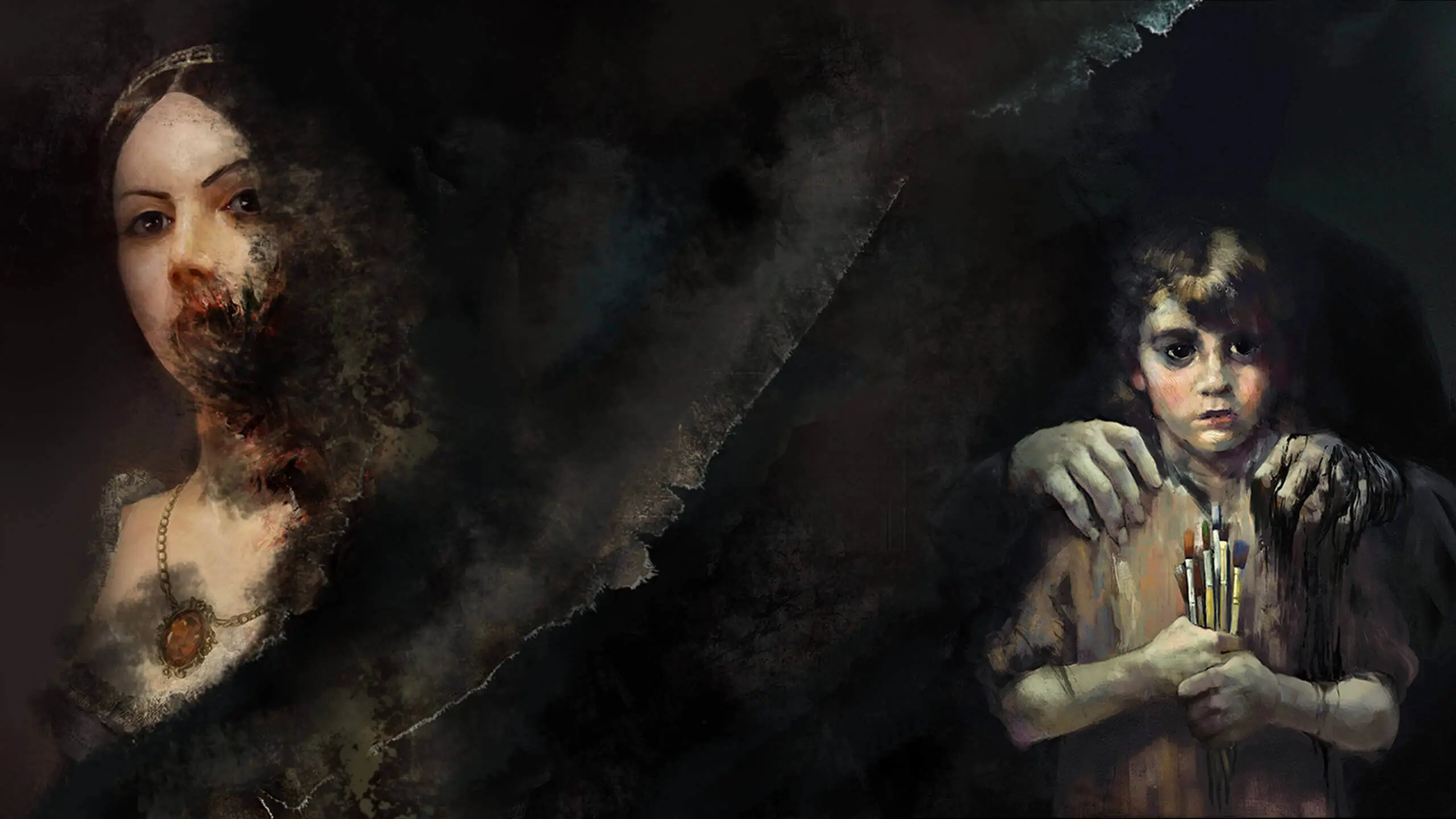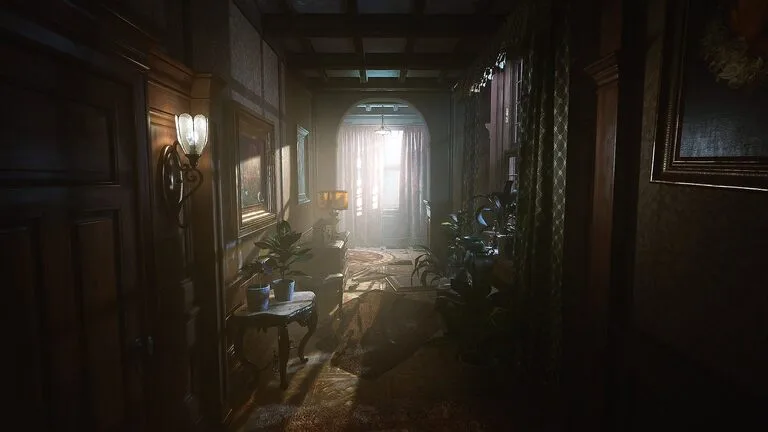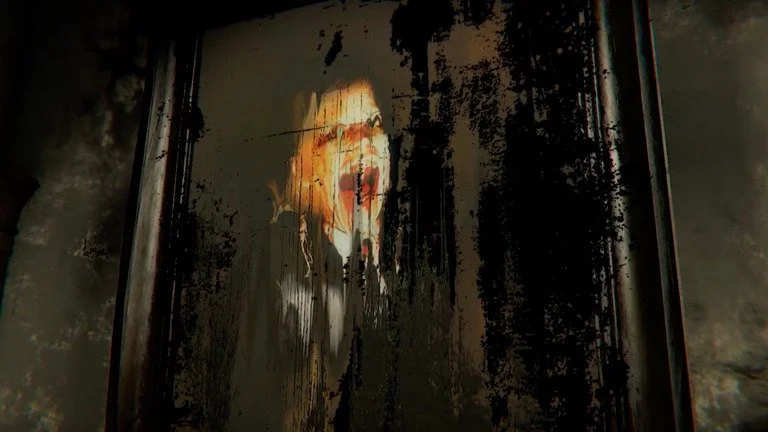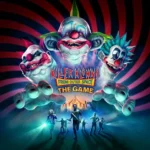Step into a realm of psychological horror as you embark on an intricate journey through the 2023 gaming masterpiece. This thrilling experience stands on its own, refusing to be a mere sequel or a complete replica of its 2016 predecessor. Instead, it defies expectations by weaving together the threads of the first installment, its intriguing 2019 follow-up, previously released horror downloadable content, and a pair of fresh, playable narratives. Result? A creature reminiscent of Frankenstein’s creation, brought to life with awe-inspiring Unreal Engine 5. Despite its breathtaking visuals and vast expanse, this rendition of Layers of Fear fails to exceed the sum of its parts. While this is undeniably the most stunning and detailed rendition of these troubling tales, it falters as a unified unit. Its components don’t have the power to deliver anything more than a handful of surface-level scares. The complex layers of horror remain unexplained, leaving much to be desired.

Unraveling The Twisted Realm of the Tormented Psyche: A Journey Through the Layers
The unmissable masterpiece crafted by legendary visionary Hideo Kojima, P.T. Prepare to be delved into the perverse realms of the tormented psyche, deeply moved by the genius of. Layers of fear plunge us into the troubled minds of a trio of actors – a mysterious painter, a ghostly actor and a troubled writer. It inspires us to uncover their tragic past, piecing together fragments of handwritten confessions, fragmentary newspaper clippings, and other remnants of their horrific history. Brace yourself as this terrifying odyssey traverses all obstacles to shake your core.
With each cautious step through these haunted dwellings are sudden rumbles that shake the very foundations of your adventure and distant screams that echo in your soul. Dangerous graffiti automatically scrawls on the walls, while shadows tease you with glimpses of ominous figures. The furniture sways and spins in a ghostly rhythm as if it’s a disco night at the Evil Dead’s infamous cabin. Be prepared to challenge your perception, as clever tricks of perspective await your unsuspecting senses. Peek into the void of an empty picture frame on an easel, only to discover a hidden door lurking behind. And beware, because layers of dread will send shivers down your spine when just by turning your head it distorts the fabric of reality, revealing a deranged puzzle from the pages of Mad Magazine’s infamous fold-in. Will give a new shape to the environment. ,

Embark on a chilling journey where darkness mingles with artistry, and the limits of the mind dissolve into the twisted tapestry of existence. Layers of fear await, ready to show their sinister wonders on those brave enough to face the depths of its psychological labyrinth.
Immersed in the eerie atmosphere of game, I was transported back to my initial encounter with the 2016 original. I soon realized that the game’s tendency to distort geometry had become a familiar pattern, diluting its once-powerful shock factor. Unfortunately, this phenomenon persists in the latest release as well, made worse by its sheer length.
PT With his short term, he skillfully employed diversionary tactics, which allowed him to retain his power. However, game’s combined campaign clocks in at a daunting 13 hours, making the repetitive loops and mind-bending manipulations feel like arbitrary jumps. The frenetic pace, akin to a tumultuous carnival ride, leaves little room for genuine apprehension. It turns the experience into a relentless series of predictable jump scares, lacking the breathing space necessary for deep dread to pervade one’s soul.
There is a notable obstacle within the fusion of the original Layers of Fear and the Layers of Fear 2, which arise from the vulnerable and protracted nature of the latter. As I embarked on this joint journey, it became increasingly clear that the pinnacle of the experience was just in the beginning. Layers of Fear 2 introduces us to the story of an actor who navigates the eerie corridors of a haunted cruise liner. However, it leans heavily on the films that influenced its making, shamelessly borrowing scenes and imagery from iconic works like Psycho, The Shining, and Seven.
ALSO READ: The Lord of the Rings Gollum Review – An Immersive Tale of Clumsiness and Captivating Gameplay
Sadly, Layers of Fear 2 struggles to carve out its own distinct identity, ultimately falling into the trap of being a derivative rehash of its predecessor’s torturous exploration. The game’s reliance on established cinematic moments dilutes its originality and fails to offer a fresh perspective. It’s like watching I Know What You Did Last Summer, but immediately followed by its weak sequel, I Still Know What You Did Last Summer.
The effect of this combined experience is like watching one’s admiration for Jennifer Love Hewitt slowly turn into a state of mere tolerance. The excitement and intrigue that once surrounded the character’s journey dwindles, leaving a sense of nostalgia until the poignant double feature ends. It’s a missed opportunity to develop the narrative and build on the strengths of its predecessor, which results in a weaker and less satisfying overall experience.
Shedding Light on The Layers of Dread: Visual Splendor and Gameplay Innovation
While there could be room for improvement in finding a delicate balance between tension and release in this reimagined layers of dread, the improvements made to the textures and lighting are undeniably breathtaking. Each story unfolds against a backdrop of visually stunning scenery that leaves a lasting impression. Whether it’s the gloomy rays of moonlight piercing the darkness, the ethereal glow inside the painter’s abode from the original game, or the seamless transition from sepia tone to vibrant technicolor, as the actor walks the haunted corridors of the mysterious ship in Layers of Fear 2. ventures through. , the visual experience is nothing short of remarkable.

The attention to detail is meticulous, allowing you to appreciate the intricacies of the game world. From the intricate cracks on the painter’s canvas, showcasing the passage of time, to the overall enhanced realism that surrounds your surroundings, the level of visual fidelity is elevated. It transports you to a realm where even a cruise liner that unexpectedly veers into a stunning hedge maze maintains a semblance of credibility.
Although the balance between tension and release may not have received the same level of refinement, the visual enhancements succeed in engaging your senses. They contribute to an overall immersive experience, creating a world where artistic brilliance meets disturbing surrealism.
The advanced lighting system not only adds visual richness to the environment but also offers new ways for players to engage with the game world. A notable addition is the inclusion of a flashlight, which provides stimulating conversation beyond the repetitive cycle of opening doors and searching drawers for narrative pieces.
In the painter’s story, the torch’s beam serves as a tool for uncovering hidden objects. By aiming it at the ghostly echoes around you, you unveil hidden objects, adding an element of discovery and exploration.
In the exciting adventure of the actor, the torch plays a separate role. It can be directed at stationary mannequins, and they can be temporarily activated to help clear the way. These eerie static figures come to life jerkily, intermittently, creating a sense of unease and awkwardness. Watching them push crates or throw themselves over railings creates a horrifying scene that appears unnaturally unstable.
These innovative uses of the flashlight bring a refreshing layer of interactivity to the gameplay experience, breaking the monotony and immersing players in interesting and harrowing encounters. The juxtaposition of light and dark, coupled with the eerie animation of the mannequins, further heightens the psychological tension that pervades the sinister world of game.
Adding to its versatility, the flashlight serves another important purpose in game: it can be used to momentarily incapacitate the pursuing enemies that occasionally emerge in the main story. In previous iterations, your only recourse was to run from these spectral pursuers, with failure resulting in an instant reset to the last checkpoint – a source of frustration for many players. However, you now have the means to create a temporary respite by spotting a charged beam of light, momentarily stopping their relentless pursuit. This gives you valuable moments to either find the exit to the area or to rapidly scour adjacent rooms for hidden collectibles. This combination significantly reduces the need for trial-and-error gameplay, offering a more dynamic and strategic approach to encounters.
Although this feature provides a welcome sense of empowerment, it tilts the balance of power somewhat in favor of the player. The torch’s rapid recharge rate makes it surprisingly easy to avoid these enemies, reducing the aura of their inevitable psychotic manifestations and making them more reminiscent of the comical ghosts of games like Luigi’s Mansion. The tension and fear associated with their presence is reduced, thereby changing the desired environment and perception of these sinister spirits.
ALSO READ: After Us Review: Exploring The World Filled with Beauty and Imperfections
Although the inclusion of a flashlight as a defense mechanism reduces frustration and gives players more agency, it may inadvertently compromise the intended balance of the game and the emotional impact of these encounters. Striking a delicate balance between challenge and empowerment is an important aspect that must be considered in order to maintain the desired sense of psychological distress throughout the game.
In addition to its combat and exploration functions, the flashlight in game also serves as a tool for solving puzzles in specific situations. It plays the role of a blacklight, unveiling hidden messages and symbols on the walls and floors, providing clues and insights to the players. However, despite this added dimension, the puzzles in game are mainly simplistic, echoing the rudimentary nature of those found in the original release.

Gameplay often revolves around carefully examining your surroundings, searching for numbers to input into combination locks, or figuring out the correct sequence of directions to open a safe. These tasks rarely demand more than a basic level of cognitive effort, leaving little room for truly challenging or thought-provoking puzzles. As a result, players seeking more engaging mental stimulation may find the gameplay experience somewhat frustrating.
Interestingly, one puzzle that puzzled me was the inconsistency in bending ability. While bowing is possible in the Actor’s chapters, this option is curiously absent in the painter’s story. It almost feels as though in between the layers of dread, the game is suddenly reminded of its knee-jerk existence. This inconsistency stands out and calls into question the game’s design choices and overall consistency.
While the integration of the flashlight into the puzzle-solving adds a layer of intrigue, the puzzles themselves remain fairly straightforward, lacking the depth and complexity that can truly engage and challenge players. The game’s occasional inconsistencies, such as the absence of certain gameplay mechanics in specific chapters, can be bothersome and may force players to question the coherence of the overall experience.
Tying The Threads of Terror: The Author’s Story and Narrative Flaws
Game combines the painter’s and actor’s horrifying tales with an introduction to the author’s story, weaving it seamlessly into the main plot. Set within the confines of a remote lighthouse, the unnamed author is kept busy with the task of writing a book about the painter, while simultaneously battling personal demons and experiencing hallucinatory experiences similar to those endured by the other protagonists.
Although this new side-story does not break free from the established pattern of manufactured dread found elsewhere, it plays an important role as a connective thread, effectively tying the two main stories together. It serves as a solid link that binds the narrative, providing insight into the wider story arc and shedding light on the fate of the series’ central antagonist. Based on the choices made throughout the game, the author’s story provides a fascinating glimpse into the various endings, each offering a unique perspective on the series’ overarching narrative.
While the addition of the author’s story does not elevate the forced-fear formula, its inclusion contributes to a cohesive structure of the layers of dread, providing a sense of continuity and a sense of interconnected events and events within the game world. Provides a deeper understanding of the characters. This adds an extra layer of intrigue and allows players to delve into the psychological depth of the overarching narrative.

Game provides an abundance of storytelling material, including optional mini-campaigns focused on the painter’s daughter and wife. It’s unfortunate, however, that its execution falls short of the extensive amount of newly recorded dialogue along with the various letters and notes you’ll find. The presentation of dialogue often sounds awkward, with grammatical errors or inconsistencies between spoken lines and the corresponding on-screen text. In some cases, it appears to be a combination of all of these issues.
Despite the disappointment in these aspects, one notable exception is the exceptional performance of Tony Todd, best known for his role as Candyman, who gives an impressive and resonant voiceover as the director in the actor’s story. It is regrettable, however, that many supporting performances do not demonstrate the same level of authority or conviction.
ALSO READ: Diablo 4 Review – Forging Your Legend
The mismatch between the quality of dialogue delivery and overall production values affects the experience and can hinder the emotional impact of the narrative. Given the importance of the voice acting in conveying the depth and authenticity of the characters, these shortcomings diminish the overall storytelling ability of Game.
While the game offers plenty of story material to uncover, dialogue delivery issues, including awkward performances, grammatical errors, and inconsistencies, undermine the immersion and impact of the narrative. It’s a missed opportunity, especially considering Tony Todd’s excellent performance and the potential for more engaging supporting roles.
Verdict
Layers of Fear immerses players in atmospheric and surreal journeys through the broken minds of highly traumatized artists. With the implementation of Unreal Engine 5, the game features stunning visuals that enhance its captivating aesthetics. The introduction of the flashlight as a gameplay mechanic provides innovative ways to interact with the environment, while reducing the frustrations associated with encounters with pursuers, a significant improvement from the original game.
However, despite these advances, the scare tactics adopted in game feel predictable and lack the element of surprise. The formulaic nature of the game’s scares becomes tiresome before each main story thread reaches its conclusion. Instead of providing a truly terrifying experience, the game often felt like 13 hours of wandering through mildly unstable hallways with less than desired levels of scares.
Layers of Fear excels in its ability to create an eerie and surreal atmosphere, but it falls short in creating impactful scares that truly unsettle players. The game’s reliance on anticipatory jump scares and its failure to create a sense of consistent dread undermine the overall terror it intends to instill.
Layers of Fear displays impressive visuals and introduces interesting gameplay elements, most notably with the torch mechanic. However, its scare tactics become predictable and fail to generate the expected terror, resulting in a largely scare-free journey through a sequence of mildly spooky hallways rather than a genuinely scary return to darkness .
FAQs
What is Layers of Fear?
Game is a psychological horror game that takes players on a journey through the troubled minds of various actors. It combines the elements of exploration, puzzle-solving, and atmospheric storytelling to create an exciting gameplay experience.
Is Layers of Fear a Sequel or a Remake?
Layers of Fear is neither a sequel nor a complete remake. It is a compilation of the original Layers of Fear game, its sequel Layers of Fear 2, previously released downloadable content, and additional new playable stories. It brings together these elements to create a comprehensive and expanded version of the game.
What is the Gameplay like in Layers of Fear?
The gameplay in Layers of Fear revolves around exploring the original environment, uncovering the back stories of the cast, and interacting with the surroundings. Players will solve puzzles, search for clues, and use a flashlight to reveal hidden objects and messages. There are occasional encounters with pursuing enemies who can be temporarily stunned using a flashlight.
How Long is the Gameplay in Layers of Fear?
The combined campaigns in Layers of Fear provide approximately 13 hours of gameplay. It includes main stories of the painter, actor and writer, as well as optional mini-campaigns focusing on the painter’s daughter and wife. Length may vary depending on the player’s speed of exploration and puzzle solving.
Is Layers of Fear a Scary Game?
Layers of Fear aims to create a spooky and unsettling atmosphere, but opinions differ on the level of its scare factor. Although it contains elements of jump scares, atmospheric effects, and psychological horror, some players may find the scares predictable or superficial. It focuses more on providing an atmospheric and surreal feel rather than intense terror.
What are the notable features of Layers of Fear?
Game features enhanced textures and lighting due to the use of the Unreal Engine 5. The addition of the flashlight introduces new interactive elements, such as revealing hidden objects and stunning enemies. The game weaves together multiple storylines and offers a glimpse into the fate of the series’ main antagonist through a branching ending.
Can I Play Layers of Fear without Playing the Previous Games?
Yes, you can play game without any prior knowledge or experience of previous games. Although it links to stories from previous releases, the game can be enjoyed as a standalone experience. However, playing the previous games can provide a deeper understanding of the overall narrative and references within Layers of Fear.
On which platforms is Layers of Fear available?
Game is available on various platforms including PC, PlayStation, Xbox and Nintendo Switch. It can be played on compatible devices and consoles connected to these platforms.






